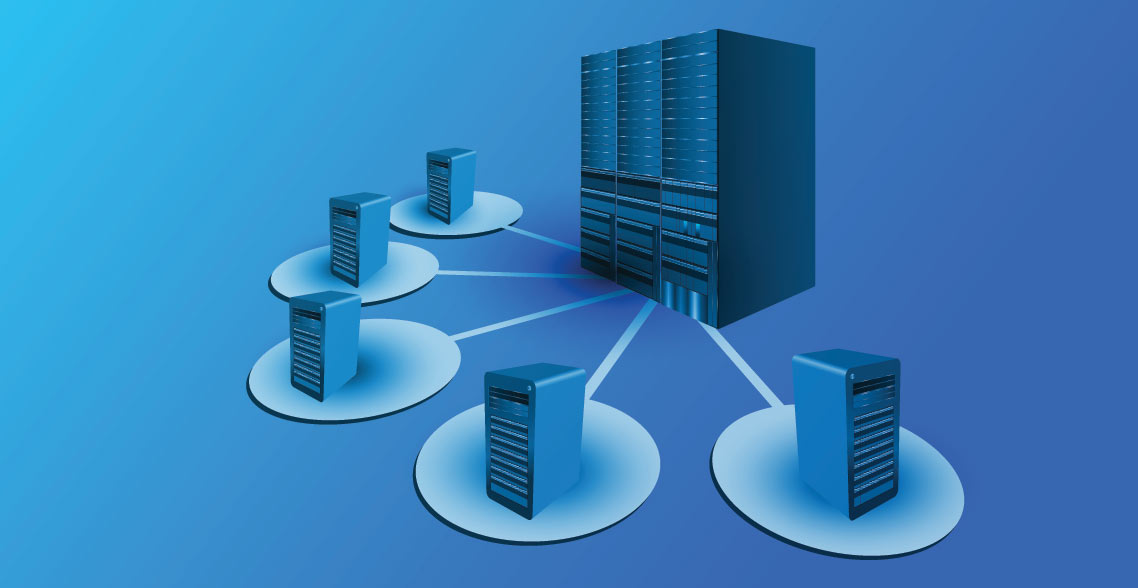VMware is at the top of the virtualization game. Businesses can increase flexibility, optimize IT operations, and consolidate resources with the help of their products.
However, it can be difficult to understand the jargon used in the VMware virtualization environment, especially when it comes to vCenter and vSphere.
Both are important in the virtualization environment, but they have different functions.
Together, we will clarify the distinctions between vCenter and vSphere so that you can use VMware virtualization as effectively as possible, especially when Direct Attached Storage (DAS) configurations are being used.
The Strength of Virtualization
VMware’s solutions are built around virtualization, which enables companies to separate operating systems and apps from the underlying hardware. As a result, it is possible to create several virtual machines (VMs) on a single physical server, maximizing resource usage and promoting increased effectiveness.
DAS: A Basic But Restrictive Method
Storage devices are directly attached to specific physical servers in a DAS storage arrangement. This provides virtual machine storage easily and affordably. It does, however, have certain restrictions.
As increasing storage requires physically adding more disks to each server, scalability becomes an issue. Furthermore, all virtual machines (VMs) on that server may experience disruptions due to a single point of failure in the storage system, jeopardizing availability.
What is VMware vSphere?
vSphere is an enterprise-scale virtualization platform, according to VMware. Indeed, VMware’s virtualization set of features and solutions goes by the moniker vSphere. With this solution, you can create an infrastructure that is dependable and resilient enough to meet nearly any kind of business need while remaining within your budget.
The features of vSphere make it easier for current data centers to transition to cloud computing. It provides a way to increase hardware utilization from 5–15% to 80% or more without sacrificing performance.
Reducing unscheduled downtime and eliminating downtime needed for server and storage maintenance are two advantages of vSphere.
It includes several essential elements:
ESXi (vSphere ESXi)
This hypervisor software allows a real server to host numerous virtual machines (VMs) by sitting directly on top of the hardware. Core features that ESXi provides include resource allocation, virtual machine creation and management, and fundamental security capabilities.
It offers attributes such as:
- Allocation of Resources: ESXi allows memory, CPU, storage, and networking resources to be allocated to individual virtual machines.
- Security: Role-based access control (RBAC) and virtual machine isolation are two of the fundamental security features that ESXi provides.
- High Availability: vMotion, which enables live migration of virtual machines (VMs) between real servers, is one of the fundamental high availability capabilities offered by ESXi.
vCenter Server
This centralized management platform sits above the ESXi hosts and offers a single interface for managing your entire virtualized environment.
The following are some of the key features that vSphere provides:
- Multiple virtual machines can be created and managed with ease.
- Eliminates downtime by transferring workloads and doing live data center maintenance.
- Distant office management with little to no local IT administrators
- Provides a versatile setting tailored to the unique demands and specifications of your company
The Advantages of vSphere
Among the many advantages that vSphere provides, some of the most significant ones are as follows:
- Enhanced protection of sensitive data and security
- Decreased expenses for IT hardware
- Business continuities strategies
- Diminished IT footprint
- Raised standards of service
- A higher caliber of the application
What is a VMware Center Server?
Your virtual infrastructure may be managed centrally with VMware vCenter Server. Controlling both your hosts and virtual machines (VMs) from a single console improves visibility and aids in error prevention.
Even if you are managing a sizable infrastructure, you can optimize daily chores and routine operations with vCenter Server. This feature gives you a comprehensive understanding of how the main parts of your environment are configured.
You can use any browser to access the main features of vSphere with the HTML 5-based vSphere Client.
In total, hundreds of workloads can be executed, which more than doubles the effort needed to manage a physical environment of the same size.
Among the main attributes and functionalities of vCenter Server are the following:
- It enables visitors to log in only once to access instances
- It enables one-click searching of your complete inventory, including hosts and virtual machines (VMs).
- 2,000 hosts and 35,000 virtual machines can be operated on a single instance.
- Uses programmable triggers to solve issues more quickly
- Records information about host settings and profiles.
Advantages of vCenter
vCenter provides numerous significant advantages, such as:
- Uncomplicated implementation, centralized oversight and awareness
- Manage servers and virtual servers with ease
- Complete scaling across cloud environments that are hybrid
- Early optimization
vSphere vs. vCenter: Important distinctions
VMware’s all-inclusive virtualization platform, vSphere, is necessary for developing and overseeing cloud infrastructures. As the main administration panel, vCenter Server improves vSphere by making administrative efficiency and control much more efficient by automating operations like role assignments, virtual machine creation, and inventory management.
After learning about ESXi, vSphere, and its main features, let’s compare and contrast vCenter and vSphere:
- Function: One of the management platforms in the vSphere package is vCenter Server. In contrast, vSphere is the complete virtualization platform that comes with vCenter Server, ESXi, and additional administration tools.
- Deployment: ESXi operates directly on the real hardware, whereas vCenter Server is usually deployed as a virtual machine.
- Functionality: The primary functions of virtualization, like establishing and maintaining virtual machines, are the focus of ESXi. The management and orchestration of your whole virtualized environment may be done centrally with vCenter.
Analogy: Visualize your virtualized environment’s vCenter as its central command center. Under vCenter’s supervision, ESXi functions as a separate server. The full military operation, then, is referred to as vSphere, and it includes both the command center (vCenter) and the various troops that collaborate (ESXi).
The Final Verdict
vCenter and vSphere offer a robust framework for managing your virtual environment, whether you go with DAS or shared storage.
In addition to streamlining administrative chores and enabling sophisticated features like resource optimization and high availability, vCenter offers centralized control.
You can create a virtualized infrastructure that is scalable, safe, and effective with the help of vSphere as a whole suite.
Read More: What are the best Practices for Integrating DAS Storage with VMware Virtualization?



